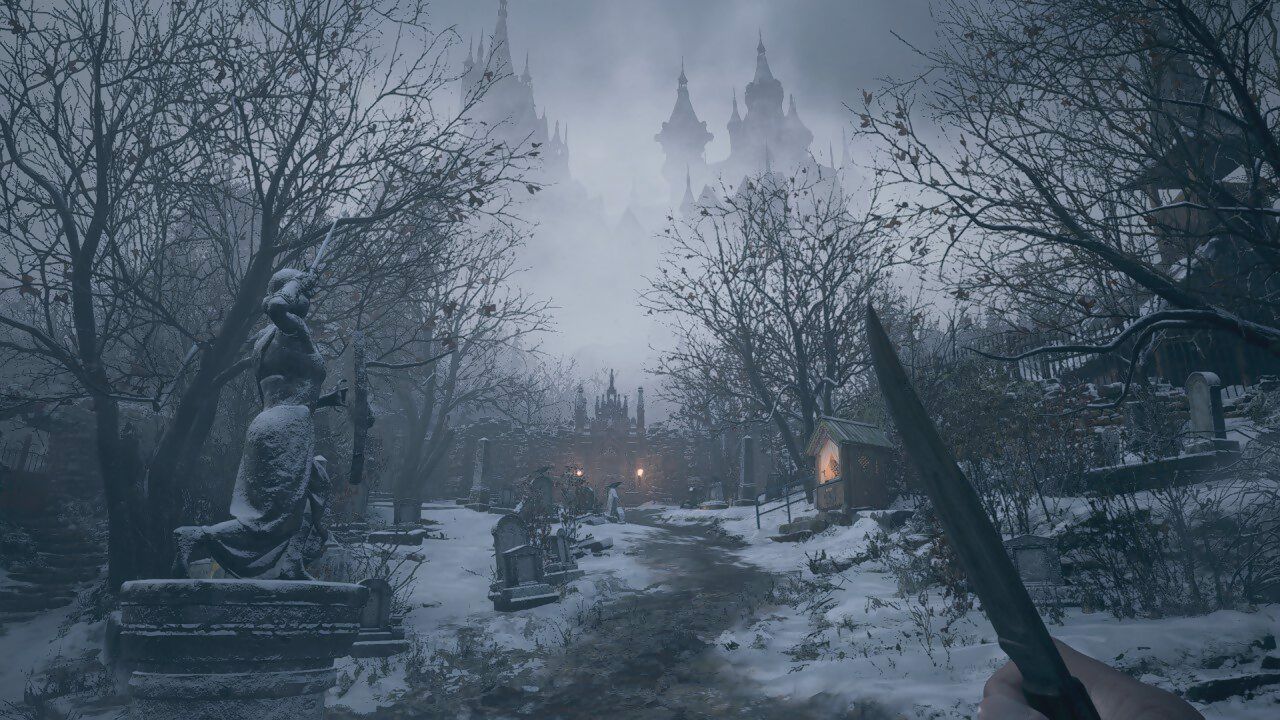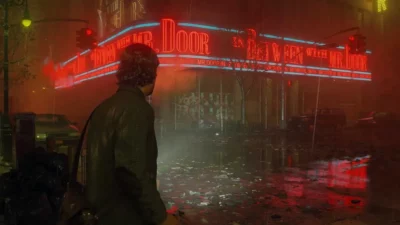
As far as spoilers go, here’s a 9’6”-sized one: for all the pre-release attention she received, Tall Vampire Lady will be hounding you for barely one-fifth of Resident Evil Village’s duration.
Alcina Dimitrescu and her cabal of ferocious daughters rarely venture outside the confines of their labyrinthine, lavishly furnished castle – a far cry from the hamlet it overlooks – and their hive is but a single stop in Ethan Winters’ quest to rescue his abducted daughter.
In fact, the imposing matriarch isn’t even the game’s most captivating antagonist, that honour falling squarely to the double-faced Karl Heisenberg, the proprietor of a seemingly disused factory outside town.
Ninety minutes in, you’ll be already acquainted with every power player in Village, a motley congregation of monstrosities, grief-stricken telepaths, and petty tyrants, though it will feel a lifetime away from the scenes of domestic bliss glimpsed during the introduction.
Following their ordeal in Louisiana, Ethan and Mia Winters have been relocated to an unnamed city in Eastern Europe, presumably on BSAA orders for the couple’s own safety. But then a series of grim events sees Ethan and his newborn daughter Rosemary kidnapped. One crash later, and Ethan wakes up near a snow-covered forest trail; his captors are dead, and his daughter is nowhere to be found.
At the end of that trail lie not only the answers to Ethan’s pressing questions but one of the most breathtaking vistas in all of gaming: a fairy-tale realm of mist-shrouded peaks, looming Gothic spires disappearing into the clouds, candle-lit shrines, and colossal statues carved onto the surrounding mountainsides.
The sheer spectacle is such that it’s nearly enough to justify your engagement alone. And it’s not just the majestic panoramas: Capcom constructs exquisitely detailed interiors as well, of all shapes, sizes, and conditions, from the opulence of Lady Dimitrescu’s ornately decorated chambers to the squalid hovels in the valley below.

In a not-so-subtle allusion, the game is obsessed with inflicting increasingly gruesome punishment on Ethan’s hands.
While criticisms of second-hand xenophobia (also aimed at its spiritual predecessor, Resident Evil 4) aren’t unwarranted, this latest instalment does dress up its bigotry sumptuously and demonstrates a staggering visual range, perfectly complemented by its drastic gameplay about-turns.
Because, picturesque scenery aside, Village is no walking simulator – at least not for the most part. This is an experience that radically shapeshifts in terms of scope, tone, and even length across its main chapters, to the degree that if someone played through each section independently, they’d be hard-pressed to identify them as parts of the same game.
Sprawling, open-world arenas give way to the rigid demands of a corridor shooter. Then the pace slows down to a crawl and you’re stripped of all offensive capabilities for an entirely combat-free investigation of a haunted manor, following which you’ll be chased through an archipelago of half-sunken windmills by a leviathan with Oedipal issues.
The sheer exuberance with which Village tries on and discards new ideas, coupled with its consistently arresting flamboyance, mean that it could never hope to match the overwhelming dread of its immediate predecessor; it’s hard to be frightened when you’re oohing and aahing at an impeccably dressed Lady D advancing on you, claws unfurled.
But even the emphasis on stylish action sequences changes from chapter to chapter – the slower-paced exploration of House Beneviento is as scary as anything in the franchise’s history, and injects some welcome Ringu-inspired chills into the carnival-esque ride.

The charismatic Karl Heisenberg in his office, about to make you an offer you can’t refuse.
Combat is still the crux of the experience, naturally, but it’s also varied, so much so that unfavourable comparisons to Resident Evil 4, though technically accurate, are missing the point. While set pieces aren’t, admittedly, as elegantly choreographed as in Mikami’s classic, Village’s best fights are dynamic affairs, less like scripted skirmishes from Call of Duty and more akin to Halo arenas, bursting with alternative scenarios, unpleasant surprises, and ad hoc heroics.
The uncertainty engendered by these messy sprawls, assisted immensely by the visual overload camouflaging your pursuers, and a type of vertical design that facilitates a Lycan lurking on the roof above you or a cultist climbing from the basement below, strikes a note of true panic that’s been rare in recent examples of the genre.
Village’s greatest triumph, however, is that it doesn’t force its moment-to-moment narrative decisions on you. Every bloody conflict won, every last-minute escape feels genuinely earned by your composure or attentiveness to your surroundings, not predetermined by plot-point requirements – as if things could have always turned out differently. It’s an illusion, of course, but a masterfully maintained one, and it works wonders for the game’s atmosphere.
If the latest Resident Evil stumbles anywhere, it’s near the finale when it reverses these priorities, shoehorns in a feeble twist, and adds a final tweak to its combat mechanics to account for a pointless subplot. Still, for the most part, Village plays like its star villain, the mercurial Heisenberg: a volatile beast with a brutal streak and boisterous, irresistible charm.
Highlight
How can something explicitly inspired by a 16-year-old classic feel so fresh? Your first encounter with a group of Lycans registers as genuinely dangerous and unpredictable, in a way the survival horror genre hasn’t felt since the Ganados started climbing through the windows in Resident Evil 4.
Verdict: 82%
Trekking through Eastern Europe hasn’t looked this grim since Eli Roth’s Hostel. Village makes the ordeal worth it.
Genre: Survival horror
Format: PC (tested) / PS4 / XBO / XB X/S / Stadia / PS5
Developer: Capcom
Publisher: Capcom
Price: £49.99/£54.99
Release: Out now





